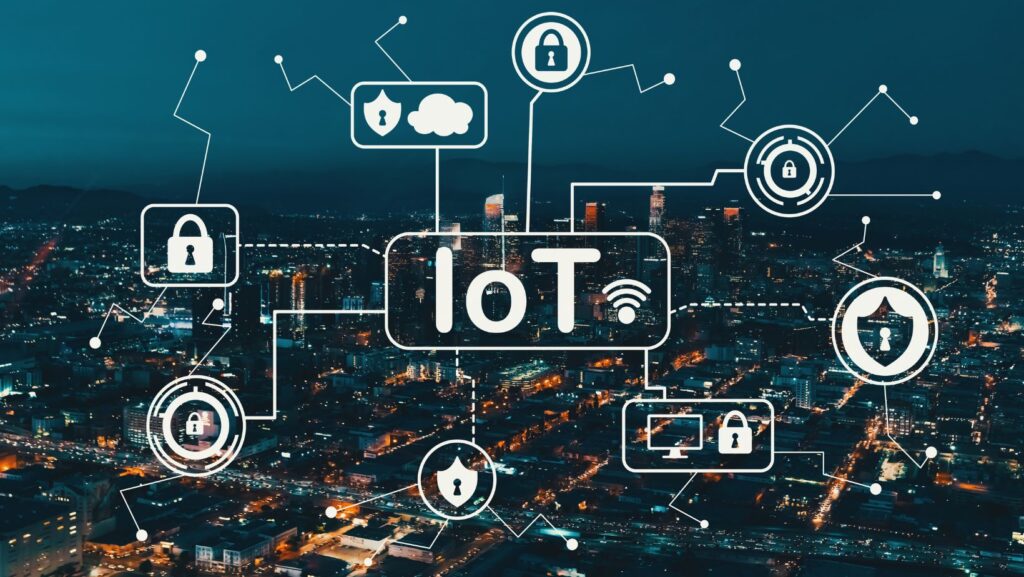
The manufacturing world is changing rapidly, with new technologies reshaping how factories operate. One of the most significant developments in recent years is the rise of Industrial Internet of Things (IoT) technology.
This article explores the key benefits and challenges of implementing industrial IoT solutions in modern factories, helping you understand how this technology is transforming the manufacturing landscape.
What is Industrial IoT?
Before we discuss the benefits and challenges, let’s clarify what Industrial IoT means.
Defining Industrial IoT
Industrial IoT refers to the use of connected devices and sensors in industrial settings, such as factories, warehouses, and other production facilities. These devices collect and share data, which can be analyzed to improve operational efficiency, reduce downtime, and enhance decision-making processes.
How Industrial IoT Differs from Consumer IoT
While consumer IoT typically involves devices like smart home appliances or wearable technology, industrial IoT focuses on more robust, specialized equipment designed to withstand harsh industrial environments. Industrial IoT solutions often need to handle larger amounts of data and integrate with existing industrial control systems.
Key Benefits of Industrial IoT
The implementation of industrial IoT can bring numerous advantages to modern factories. Let’s explore some of the most significant benefits:
Improved Operational Efficiency
One of the primary advantages of industrial IoT is its ability to enhance operational efficiency. By collecting real-time data from various parts of the production process, manufacturers can identify bottlenecks, optimize workflows, and reduce waste.
For example, sensors on production line equipment can monitor performance metrics such as speed, temperature, and vibration. This data can be analyzed to predict when maintenance is needed, allowing factories to schedule repairs before equipment fails, thus reducing unplanned downtime.
Enhanced Quality Control
IoT in the industry can significantly improve quality control processes. Connected sensors can monitor product quality at various stages of production, alerting operators to potential issues before they become serious problems.
For instance, in a food processing plant, IoT sensors could monitor temperature and humidity levels throughout the production process, ensuring that products remain within specified parameters. This real-time monitoring can help maintain consistent quality and reduce the risk of product recalls.
Increased Safety
Safety is a top priority in any industrial setting, and industrial IoT solutions can play a crucial role in creating safer work environments. Connected devices can monitor environmental conditions, equipment status, and even worker locations to prevent accidents and respond quickly to emergencies.

For example, wearable devices could alert workers when they enter hazardous areas or when dangerous conditions are detected. In the event of an accident, these devices could also quickly pinpoint the location of affected workers, speeding up response times.
Better Energy Management
Industrial IoT can help factories significantly reduce their energy consumption. Smart sensors can monitor energy usage across different areas of the facility, identifying opportunities for optimization.
For instance, IoT-enabled lighting systems can automatically adjust based on occupancy and natural light levels, while smart HVAC systems can optimize heating and cooling based on real-time conditions. These measures not only reduce energy costs but also help factories meet sustainability goals.
Improved Supply Chain Management
Industrial IoT can enhance visibility and control throughout the supply chain. Connected sensors can track inventory levels, monitor shipments in real time, and provide valuable data for demand forecasting.
For example, RFID tags on products can automatically update inventory systems as items move through the factory and onto delivery trucks. This real-time tracking can help prevent stockouts, reduce excess inventory, and improve overall supply chain efficiency.
Challenges in Implementing Industrial IoT
While the benefits of industrial IoT are substantial, implementing these solutions also comes with several challenges. Understanding these obstacles is crucial for successful adoption:
Security Concerns
One of the most significant challenges in implementing industrial IoT is ensuring robust cybersecurity. As factories connect more devices to their networks, they also increase their potential attack surface for cybercriminals.
Industrial systems often control critical infrastructure and processes, making them attractive targets for cyberattacks. A security breach could lead to production disruptions, data theft, or even physical damage to equipment.
To address this challenge, manufacturers need to implement comprehensive security measures, including:
- Regular security audits
- Secure network architecture with proper segmentation
- Strong authentication and access control measures
- Regular software updates and patch management
- Employee training on cybersecurity best practices
Data Management and Analysis
Industrial IoT generates vast amounts of data, which can be both an asset and a challenge. The sheer volume of data collected from numerous sensors and devices can overwhelm traditional data management systems.
Moreover, extracting meaningful insights from this data requires advanced analytics capabilities. Many manufacturers struggle to find the right balance between collecting enough data to be useful and avoiding data overload.
To tackle this challenge, companies need to invest in robust data management and analytics platforms. This might include:
- Scalable cloud storage solutions
- Edge computing for real-time data processing
- Advanced analytics tools, possibly incorporating AI and machine learning
- Data visualization tools to make insights more accessible
Integration with Legacy Systems
Many factories have existing equipment and systems that may not be easily compatible with new IoT technologies. Integrating industrial IoT solutions with these legacy systems can be complex and time-consuming.
This challenge is particularly acute in older factories, where equipment may lack the necessary connectivity features. Replacing all existing equipment is often not financially feasible, so manufacturers need to find ways to retrofit older machines with IoT capabilities.
Possible solutions include:
- Using IoT gateways to connect legacy equipment
- Implementing middleware to facilitate communication between old and new systems
- Gradually phasing in new IoT-enabled equipment as part of regular upgrade cycles
Skill Gap and Training
Implementing and maintaining industrial IoT systems requires specialized skills that many manufacturers may not have in-house. This skill gap can be a significant barrier to the adoption and effective use of IoT technologies.

Employees need to be trained not only in how to use new IoT systems but also in how to interpret and act on the data these systems provide. This often requires a shift in mindset from reactive to proactive maintenance and decision-making.
To address this challenge, manufacturers can:
- Invest in comprehensive training programs for existing staff
- Partner with IoT solution providers for ongoing support and training
- Recruit new talent with relevant IoT and data analysis skills
- Foster a culture of continuous learning and adaptation
Cost Considerations
While industrial IoT can lead to significant cost savings in the long run, the initial investment can be substantial. This includes not only the cost of IoT devices and sensors but also the necessary infrastructure upgrades, software licenses, and training.
For smaller manufacturers or those operating on thin margins, these upfront costs can be a significant barrier to adoption. Even for larger companies, justifying the investment can be challenging if the return on investment (ROI) is not immediately clear.
To manage these costs, manufacturers can:
- Start with small-scale pilot projects to demonstrate value before full-scale implementation
- Prioritize IoT projects with the clearest and quickest ROI
- Consider IoT-as-a-service models to reduce upfront costs
- Seek government grants or incentives for industrial modernization
Conclusion
Industrial IoT is transforming modern factories, offering significant advantages while presenting challenges that businesses must carefully navigate. As technology evolves, we can expect to see even more innovative applications in industrial settings.
Manufacturers who successfully implement these technologies will likely gain a competitive edge, improving their efficiency and adaptability. As we move forward, Industrial IoT will undoubtedly play a crucial role in shaping the factories of tomorrow, making it an essential consideration for any forward-thinking manufacturer.











